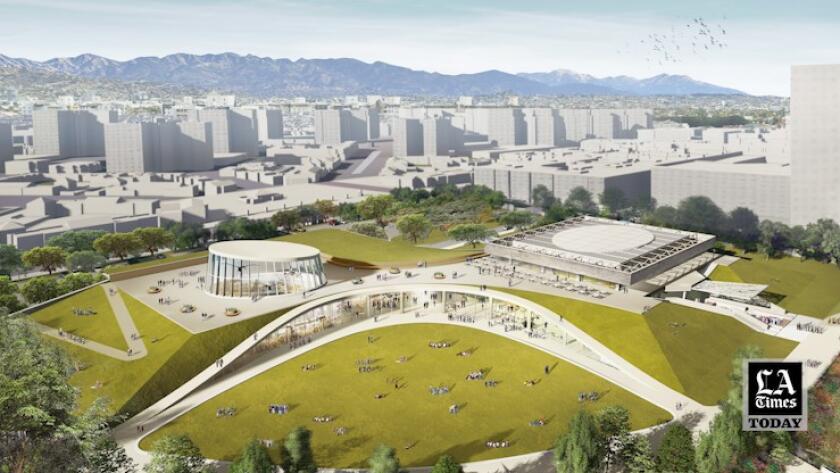La Brea Tar Pits pushes forward with its indoor-outdoor makeover
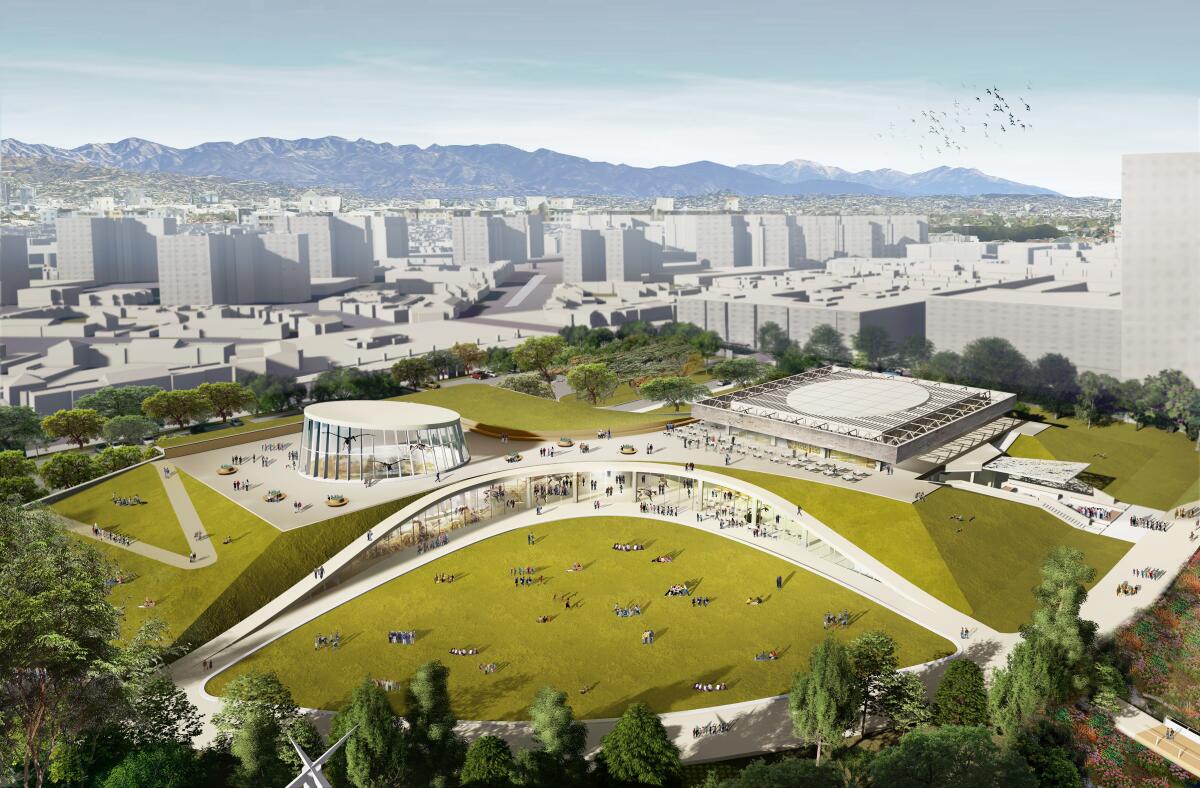
- Share via
The La Brea Tar Pits’ makeover team is adding new members. Lori Bettison-Varga, the president and director of the National History Museums of Los Angeles County, announced today that the La Brea Tar Pits renovations will also have help from exhibition designers at Kossmanndejong (KDJ) and named Los Angeles-based Gruen Associates as the executive architect.
KDJ is an Amsterdam-based firm that focuses on creating immersive narrative spaces. Previous exhibition projects include “Nature. And us?” in the Stapferhaus in Lenzburg, Switzerland, and “The Voice of Urban Nature” at Floriade Expo 2022 in Almere, Netherlands. According to Bettison-Varga, KDJ was selected for its design aesthetic, storytelling, focus on community engagement and architectural background — something that’ll come in handy for the hefty project like the reimagining of La Brea Tar Pits.
“The storytelling isn’t just indoors, it’s also outdoors,” she says. “They [KDJ] capture the whole picture. Not just aesthetics, but also the visitor experience lens that they bring.”
The latest development follows the museum board’s 2019 announcement that Weiss/Manfredi, a New York-based design firm led by co-founders Michael Manfredi and Marion Weiss, would be leading the redesign. Their proposal for the paleontological research site, museum and park centered on a double helix titled “Loops and Lenses.” The idea is that the exhibitions and excavation sites central to the La Brea Tar Pits will be more accessible through a 1-kilometer pedestrian path that will wind through the grounds.
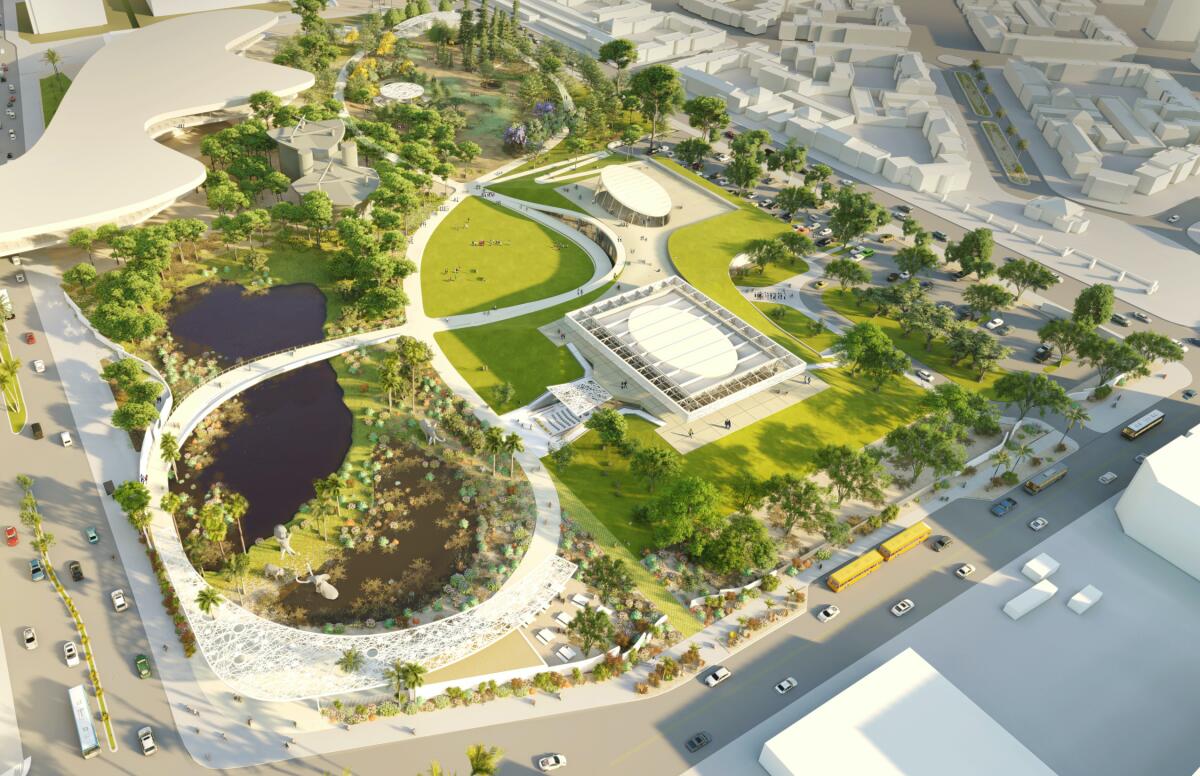
“What we love is the idea that you could wander in anywhere and still, through this unfolding loop, discover the research being done on the site with the excavations, discover the community greens in the center, and the carving into the hillside to reveal the collection,” Weiss says.
Part of the multiyear plan includes addressing exhibition space, or lack thereof. The Page Museum, designed by architects Willis Fagan and Frank Thornton and completed in 1977, had reached its capacity and seemed to be in an “introverted position,” according to Manfredi.
“One of the things that we were excited about in our renovation of the Page and the expansion is to take the museum and open it up,” he says. “KDJ’s work is going to be central to that and revealing this incredible collection, I think, is one of their great strengths.”
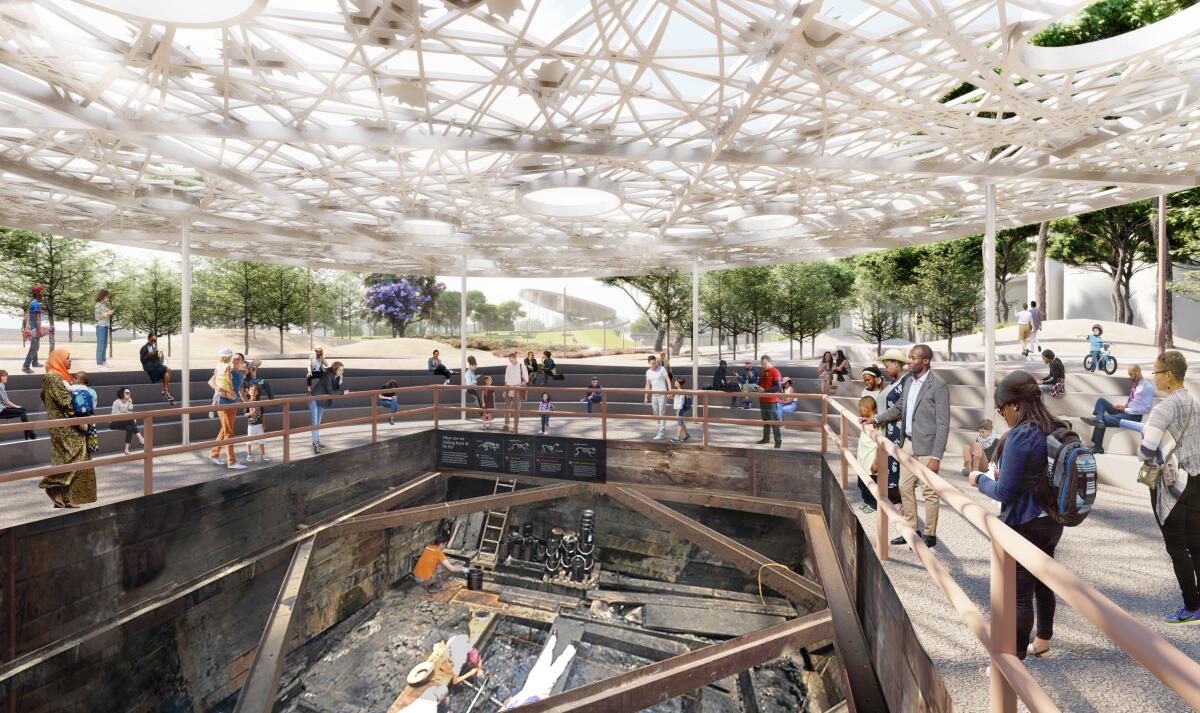
Plans to create a new exhibition space, with collaboration from KDJ, will add “even more depth and insight to what these artifacts that have been found in the site can say,” Weiss says. Tar pits will be accompanied by classroom spaces and easily accessible from exhibition spaces to create what Bettison-Varga calls an “indoor-outdoor continuum.”
Another highlight of the makeover involves giving the La Brea Tar Pits the attention it deserves as one of the most important paleontological sites in the world. It needs a signature feel that is at once welcoming, Weiss says.
Currently, walking into the section of Hancock Park by traversing under Michael Heizer’s “Levitated Mass” from 6th Street or walking past LACMA from Wilshire makes it difficult to discern where the tar pits start. Manfredi hopes aspects like the triple loop and identifiable entrance sites will create a more interconnected experience for visitors and break any borders between the two institutions.
“We would imagine that a visitor would go to LACMA and be intuitively drawn to the La Brea Tar Pits and the Page Museum,” he says. “And likewise, someone who might be a paleontologist might wander over to LACMA.”
As designs continue to develop, Bettison-Varga says there is consistent communication with LACMA to ensure that their plans work well alongside the art museum’s redesign. The David Geffen Galleries, designed by Peter Zumthor, are currently scheduled to have construction completed in late 2024.
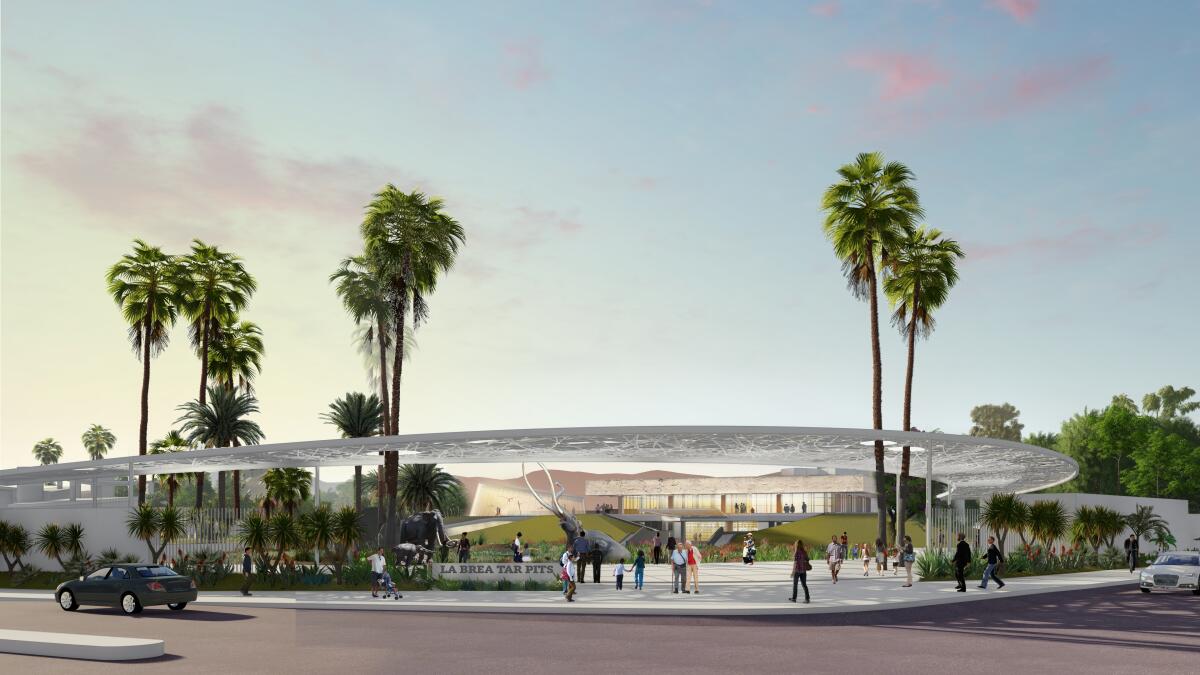
Bettison-Varga says the reimagining will “reframe” how the community experiences the paleontology museum, all the way down to the depiction of an Ice Age tar pit. The mammoths — which have become an L.A. cultural icon — are seen embedded in a lake pit, which is not an accurate representation of a tar pit. Bettison-Varga says that patrons walking in from the corner of Hancock Park will experience a newer, more realistic Pleistocene Garden with the beloved mammoths, but it’s still unclear whether the mammoths will be moved from their current location.
“The museum had not been addressed in any meaningful way since it opened in the mid-’70s,” Bettison-Varga says.
The meaningful update includes a more poignant and broader contextualization of the tar pits. What began as a way to display the fossils and creatures of the past is evolving into a reminder of the impacts of climate change as the tar pits expose the evolution of our world’s ecosystems.
“The research that has been done at La Brea Tar Pits is uncovering mysteries of the last round of climate change,” Manfredi says. “Out of the past comes an opportunity to think about our very fragile future.”
- Share via
Watch L.A. Times Today at 7 p.m. on Spectrum News 1 on Channel 1 or live stream on the Spectrum News App. Palos Verdes Peninsula and Orange County viewers can watch on Cox Systems on channel 99.
More to Read
The biggest entertainment stories
Get our big stories about Hollywood, film, television, music, arts, culture and more right in your inbox as soon as they publish.
You may occasionally receive promotional content from the Los Angeles Times.
